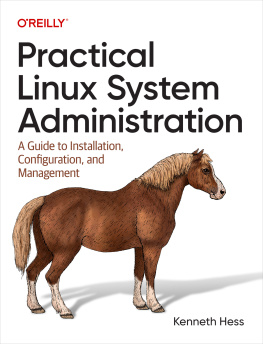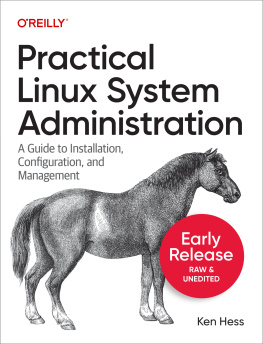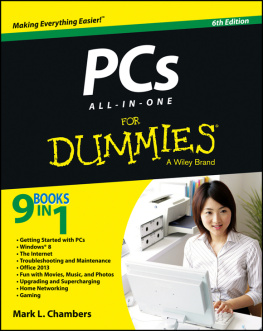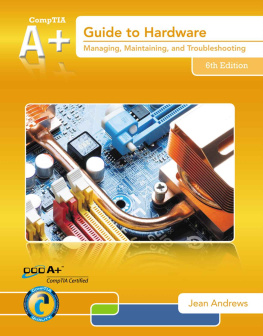THEORY CONTENTS
1. Some Important Definitions 3
2. Computer System Parts & Peripherals 4 3. Power Supplies & Testing 7
4. Computer Case / Chassis (Cabinet) 11
5. Data storage in CPU, RAM, HDD, DVD Etc 13
6. Binary Coded Language & Units 16
7. Motherboard I / O Ports (USB) & Devices 18
8. Storage Drives (HDD, SSD) & Ports 24
9. Expansion Adapters 27
10. Expansion Slots & Interfaces 31
11. Chipset & Controllers 33 12. RAM Types (Static, Dynamic, DDR1,2,3,4) 35
13. Processor / CPU (Core 2, Core i3, i5, i7) 38 14. Computer Ports & Symbols 44
15. Other Computer Parts & Peripherals 45
PRACTICAL CONTENTS
- Assembly of Computer 49
- Internal and External Connections 51
- Laptops and Notebooks 53
- BIOS and Options 54
- Introduction to Operating Systems 58
- Hard disk Partitions and File Systems 61
- Windows Vista / 7 / 8 / 10 Basics 62
- Windows Vista / 7 / 8 / 10 Installation 64
- Device Drivers Installation 71
- Internet Configurations 73
- Virus and antivirus 78
- System Maintenance Tips 80
- Windows 7 / 8/ 10 Troubleshooting 82
- Hardware Troubleshooting 83
- Advanced System Care 91
- Printers Types and Mechanisms 92
- Scanner Installation & Configuration 95
- Webcam Installation & Configuration 97
Definitions
1. What is a Computer?
Computer is an electronic device that can process and stores the information or data.
2. What is Information?
Set of facts about human being or about an object are called as information.
3. What is Data?
Collection of information is called as data.
4. What is Data Storing?
Storing the data means keeping or holding the data in digital format.
5. What is processing?
Performing both logical and arithmetic operations according to user given instructions or user written program or installed software.
6. What is Computer Hardware?
The physical components of a computer system are called as computer hardware.
7. What is software?
Set of instructions or programs which will be used to control the operation of a computer system and to perform tasks are called as Software.
8. What is a Program?
A computer program , or just a program, is a sequence of instructions , written to perform a specified task with a computer .
9. What is firmware?
Software permanently stored in hardware (Ex: Software stored in BIOS).
10. What is Peripheral?
Input / Output device like Printer, Scanner, Web Camera etc. Those are not the part of the Computer, they are separate devices, for a specific purpose we are attaching them to Computer
11. What is a Computer system?
Computer with software installed and peripherals connected is called as computer system.

Computer Parts and Peripherals
S No | Component / Peripheral |
Description |
| Computer Case / Chassis/ Cabinet | A computer case (also known as the computer chassis, box or housing) is the enclosure that contains the main components of a computer. |
| Motherboard / Mainboard / Systemboard | The main printed circuit board in a computer that carries the system buses. It is equipped with sockets to which all processors, memory modules, plug-in cards, daughter boards, or peripheral devices are connected. |
| CPU / Processor | Central Processing Unit / Processor .The brain of the computer - the device capable of performing Arithmetic and Logical operations on data. Or for thinking. |
| Memory / RAM | Abbreviation for Random Access Memory. Operating System Software, programs and data are usually copied into RAM from a disk drive for the central processing unit (CPU) to have fast and direct access when needed to perform tasks. |
| Display / Video / Graphics Adapter | Display Adapter is an expansion card which generates a feed of output images to a display. It converts digital signals into video signals. |
| Hard Disk Drive | A hard disk Drive is a computer storage device that stores data on rotating magnetic surfaces permanently. |
| Floppy Disk Drive | A drive that reads from or writes to separate diskettes which the user inserts. Information is stored on the diskettes themselves. |
| Optical Disc Drive (ODD) | An optical disk drive is a storage device that uses light or lasers to store or retrieve information. Common types include CD or DVD drives. |
| Sound Card / Audio Adapter | A sound card is an internal computer expansion card that facilitates the input and output of audio signals to and from a computer under control of computer programs. |
| LAN / Ethernet Adapter | The Ethernet card provides a standardized way of connecting computers together to create a network. |
| MODEM (Modulator and Demodulator) | A device that allows two computers to communicate over telephone lines. It converts digital computer signals into analog and converts the analog signal back into a digital format. |
| TV / FM Card | A TV tuner card is hardware that allows analogue or digital broadcast television signals to be received and converted or translated for display by a computer. |
| Monitor | The monitor displays the video and graphics information generated by the computer through the video card . Monitors are very similar to televisions with high resolution. |
| Keyboard | The keyboard is an input device designed to enter text, characters and other commands into a computer or similar device. |
| Mouse | The mouse is a part of a computer which provides the major way of interacting with graphical user interfaces on a computer. |
| Printer | A computer printer is a computer peripheral device that produces a hard copy (permanent human-readable text and/or graphics, usually on paper) from data stored in a computer connected to it. |
| Scanner | A device that reads a printed page and converts it into a graphics image (Soft Copy) for the computer. |
| Web Cam | Used to capture images and videos and transfer them over Web or Internet |
| Microphone | A microphone, sometimes called a Mic (pronounced "mike"), is a device that converts sound into an electrical signal. |
| Speakers | You need speakers to hear the sound generated by a sound card. You should buy speakers with a built-in amplifier to strengthen the sound signal and improve the performance. |
| Thumb Drive / Pen Drive / USB Flash Drive | A USB Flash Drive is used as a small, lightweight, removable data storage device. This hot-swappable, non-volatile. |
Power Supplies
Current : Flow of electric Charge or Flow of electricity or flow of electrons (negative
charged particles) through a conductor or wire.












